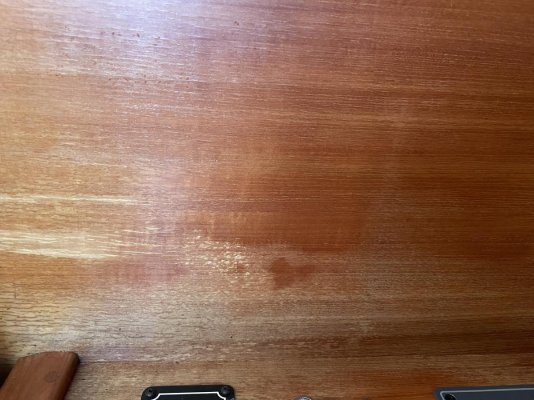Most of what we are seeing here is a varnish like finish lifting, but that also means that you are going to likely need to get to the bottom of some of the grain and that’s a decent cut.
I would not do anything until I figured out if this is veneer or not.
If it was veneer, I’d sand lightly with 400 grit to try to get the finish mostly off while not sanding the grain flat, then I’d wet sand with teak oil, then wipe the resulting paste across to try to fill the grain. The problem here with a hardened finish is that teak oil is only sorta going to work since you will be blending two different kinds of finishes. Not a lot of finish there, but if veneer, not much room to work with.
If not a veneer, just a bit more aggressive sanding, does not look horrible to my amateur eyes.


